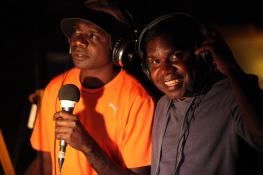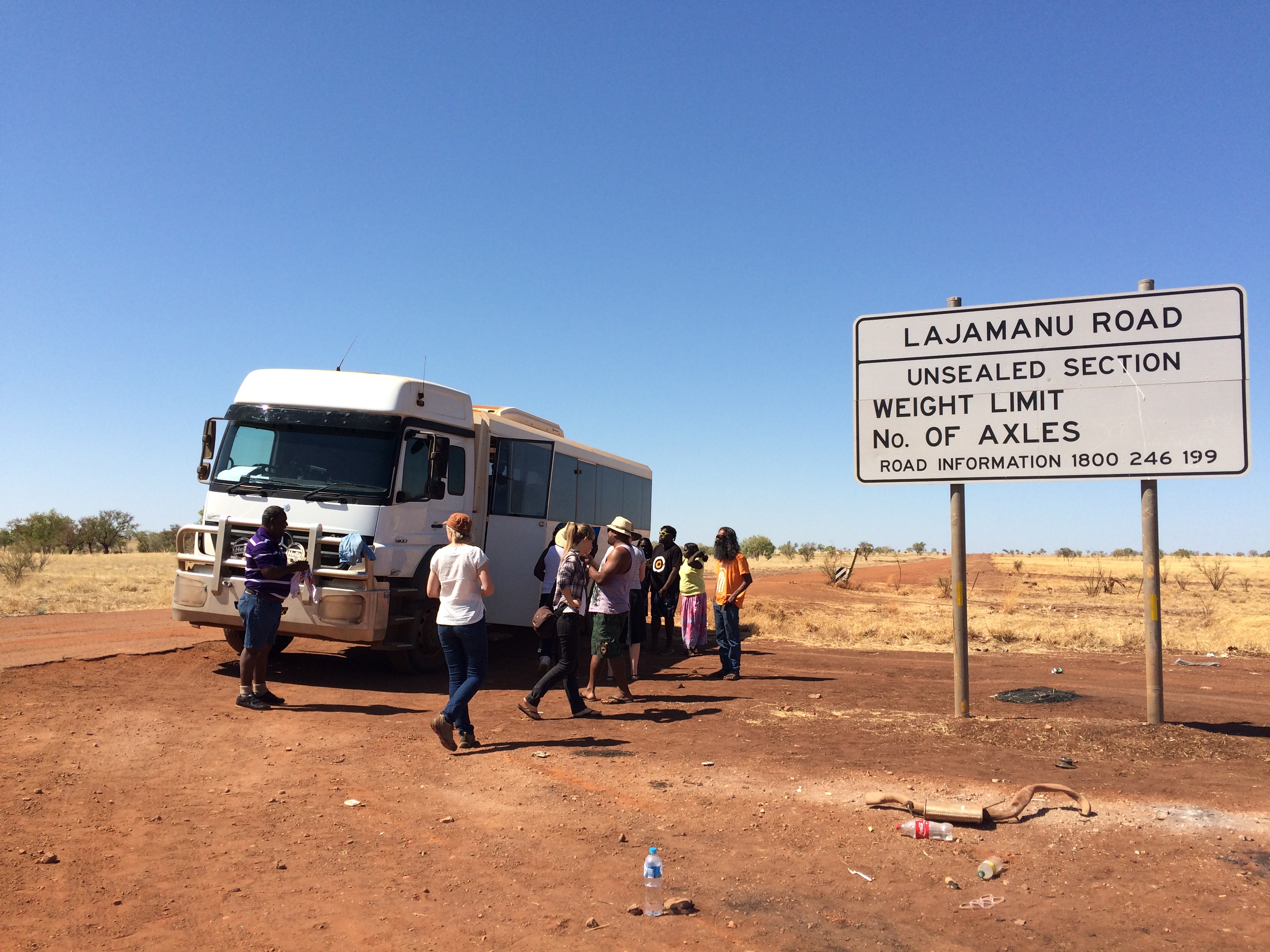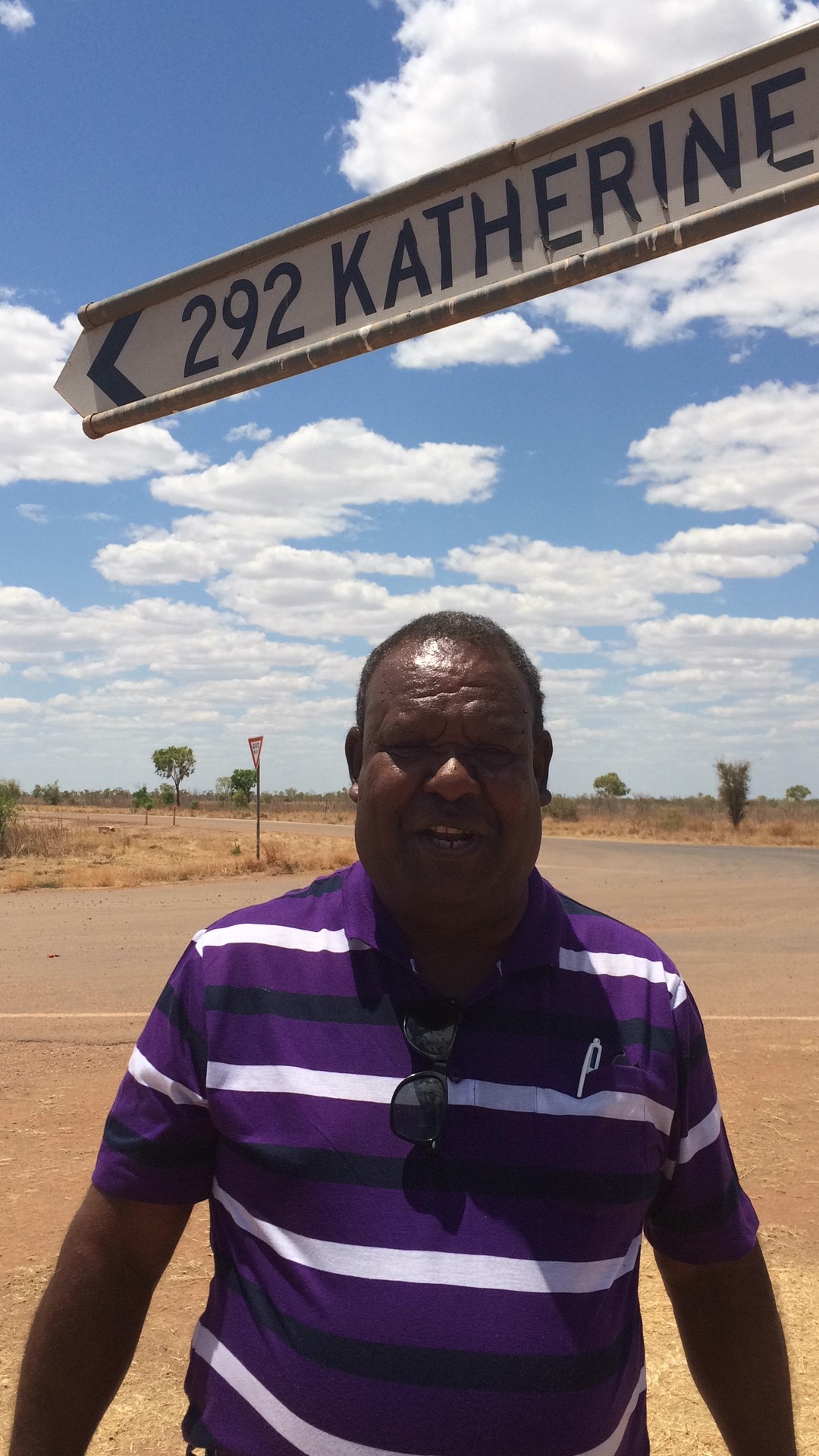
Reflections on the Remote Indigenous Media Festival
Getting out of the office, and heading into the outback, CBAA Member Services Officer, Emma Couch recently spent a week as a delegate at the Indigenous Remote Communication Association’s 17th Remote Indigenous Media Festival in Lajamanu, NT.
Hosted by IRCA in partnership with PAW Media and Communications and the Lajamanu community and key partner Indigenous Community Television, the festival took place from 27 September – 2 October 2015. Over five days, remote media workers and industry guests took park in an exciting industry program with skills workshops, roundtables, video screenings, live radio and TV coverage, music and cultural events.
Here is what Emma had to say about her RIMF experience.
By Emma Couch

The 17th Remote Indigenous Media Festival was preceded by a 12-hour bus ride from Darwin, heading south into the outback. One would imagine this to be a gruellingly long journey; however it was quite the opposite.
My travel partner on the Bohdi Bus (pictured right) was Frank Faiud (pictured below; right); a man not short of a word. Frank gave me my first insight into Remote Indigenous Media, regaling stories of his involvement of the board of the Torres Strait Islander Media Association (TSIMA) and involvement in the remote indigenous community broadcaster on Thursday Island, Radio 4MW. Before I knew it, it was 5:30pm on Sunday evening and we were stepping off the Bohdi Bus onto the deep red earth of Lajamanu.
The following five days on community were nothing but remarkable.
Through a Welcome to Country from the women of Lajamanu and address from Federal Minister for Indigenous Affairs Nigel Scullion, the scene for the week-long event was set.
The festival’s 180 delegates were provided with the opportunity to develop skills in all areas of media, including radio journalism, digital storytelling, animation and documentary filmmaking. When the tools were down, industry forums and partner meetings provided platforms to discuss developments, setbacks and strategies of relevance to this expansive sector.
As my background in community media has been hedged in regional and metropolitan community radio, I gained a great insight into the uniqueness of remote indigenous media. Of note was the priority placed on professional skill development and job creation for Aboriginal and Torres Strait Islander people.
Throughout the week, I was enlightened by the versatility of the indigenous media sector, and how their service to remote Australia works to combat isolation, connect communities back to their country and plays a significant role in celebrating, documenting and archiving the traditional languages, dreamtime stories and customs of this country.
During the final evening of the festival, we were treated to a concert in the community featuring the Lajamanu Teenage Band (a band so excellent, they are held in high regard well after their teenage years), among other talented Indigenous performers from around the country.
The theme of the festival ‘Speaking to Country, Speaking from Country’, embraced us all throughout the week that had just gone by and provided an fresh outlook and energy for me to continue to do what I do in community media and never give up on that ‘oily rag’.

Facebook comments